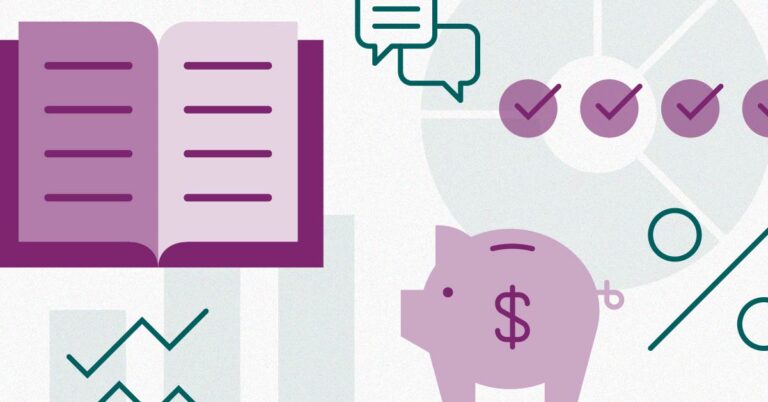Investing in the stock market can be intimidating, especially when markets are volatile, and prices seem to swing unpredictably. For those looking to build long-term wealth, it’s crucial to find a strategy that helps mitigate risk while maximizing potential gains. One of the most effective and simple strategies for achieving this balance is dollar-cost averaging (DCA). It’s a powerful tool that can help both novice and experienced investors navigate market fluctuations with confidence. Let’s dive into why dollar-cost averaging is so important in stock market investing and how you can use it to your advantage.
What Is Dollar-Cost Averaging?
Dollar-cost averaging is an investment strategy where you invest a fixed amount of money into a particular stock or investment at regular intervals, regardless of the stock’s current price. This means you’ll buy more shares when prices are low and fewer shares when prices are high, but you continue investing consistently over time.
For example, let’s say you decide to invest $200 in a stock every month. If the stock price is $50 in one month, you’ll buy 4 shares. If the price rises to $100 the next month, you’ll buy 2 shares. Over time, this method averages out the cost per share, reducing the impact of market volatility on your investments.
Why Dollar-Cost Averaging Is Important
- Reduces the Impact of Market Volatility
One of the biggest fears for many investors is buying stocks just before prices drop. Timing the market perfectly is almost impossible, even for seasoned professionals. The beauty of dollar-cost averaging is that it removes the pressure of trying to time the market. By investing regularly, you’re less affected by short-term market fluctuations.
When stock prices fall, your fixed investment buys more shares, positioning you for potential gains when the market recovers. When prices rise, you still benefit from owning shares that have appreciated in value. This long-term approach helps smooth out the highs and lows of the market, making it easier to stay on track with your investment goals.
- Promotes Discipline and Consistency
One of the greatest challenges in investing is maintaining consistency. Many investors tend to act based on emotion—panic-selling when markets dip and rushing to buy when prices are high. Dollar-cost averaging encourages discipline by establishing a routine of regular investments, regardless of market conditions.
This discipline can help prevent emotional decision-making, which often leads to poor investment choices. By committing to investing a fixed amount on a regular basis, you remove emotions from the equation and stay focused on your long-term strategy.
- Reduces the Risk of “Lump-Sum” Investing
Lump-sum investing involves investing a large amount of money all at once. While this can work out well if you happen to invest just before the market rises, it can also backfire if you invest just before a significant downturn. Dollar-cost averaging reduces this risk by spreading your investment over time.
For instance, if you have $10,000 to invest, putting it all into the stock market on a single day leaves you vulnerable to market volatility. Instead, using dollar-cost averaging, you could invest $1,000 each month for 10 months. This way, you’re less exposed to sudden market drops, and you gradually build your investment portfolio over time.
- Makes Investing More Accessible
Dollar-cost averaging allows you to start investing with smaller amounts of money, making it more accessible for investors who don’t have a large sum to invest upfront. Many people mistakenly believe they need a significant amount of money to begin investing, but with dollar-cost averaging, you can start small and build your portfolio gradually.
This approach is particularly valuable for younger investors or those just beginning their investment journey. By investing small amounts regularly, you can take advantage of the power of compound interest over time, which can lead to significant growth in your portfolio.
- Takes Advantage of Market Dips
With dollar-cost averaging, market dips become an opportunity rather than a source of anxiety. When stock prices fall, you’re able to buy more shares with the same amount of money, reducing your average cost per share. As the market eventually recovers, the shares purchased during the dip can increase in value, leading to potential gains.
This strategy flips the fear of downturns on its head, helping you stay calm during market corrections or bear markets. Instead of worrying about short-term losses, dollar-cost averaging encourages you to see lower prices as an opportunity to buy shares at a discount.
How to Implement Dollar-Cost Averaging
- Choose a Set Amount to Invest
The first step in dollar-cost averaging is to decide how much you can comfortably invest on a regular basis. This could be a fixed dollar amount every week, month, or quarter, depending on your budget and financial goals. Make sure the amount is sustainable, so you can continue investing consistently over the long term.
- Pick an Investment Schedule
Once you know how much you’ll invest, establish a regular investment schedule. Most investors choose to invest monthly, but you can also invest weekly, bi-weekly, or quarterly. The key is to be consistent. Automating your investments through your brokerage platform can make this process even easier, ensuring you stick to your plan without having to remember each month.
- Select Your Investments
While you can use dollar-cost averaging to invest in individual stocks, many investors choose to apply this strategy to index funds, exchange-traded funds (ETFs), or mutual funds. These funds offer diversification across a wide range of assets, reducing the risk associated with individual stock picks. Popular choices for dollar-cost averaging include low-cost index funds like the S&P 500 index fund or total stock market ETFs, which track the overall market performance.
- Stick to the Plan
The key to successful dollar-cost averaging is consistency, even when the market fluctuates. It can be tempting to stop investing during a market downturn, but staying committed to your plan allows you to take full advantage of lower prices. Likewise, avoid the urge to invest more during market booms—stick to your regular investment amount regardless of market conditions.
Real-World Example of Dollar-Cost Averaging
Let’s say you decide to invest $500 in a stock every month for six months. Over that time, the stock price fluctuates:
- Month 1: Stock price is $50, you buy 10 shares
- Month 2: Stock price is $45, you buy 11.1 shares
- Month 3: Stock price is $55, you buy 9.1 shares
- Month 4: Stock price is $40, you buy 12.5 shares
- Month 5: Stock price is $60, you buy 8.3 shares
- Month 6: Stock price is $50, you buy 10 shares
At the end of six months, you’ve invested $3,000 and purchased 61 shares. Your average cost per share is approximately $49.18, even though the stock price fluctuated from $40 to $60 during that time. By consistently investing each month, you lowered your overall cost per share and minimized the impact of market volatility.
When Dollar-Cost Averaging May Not Be the Best Strategy
While dollar-cost averaging is an excellent strategy for many investors, it’s not always the best approach in every situation. For example, during a prolonged bull market where stock prices are steadily rising, a lump-sum investment made early may outperform dollar-cost averaging because you would have bought more shares at lower prices at the start.
Additionally, for investors who have a large sum to invest and a higher risk tolerance, lump-sum investing may lead to higher returns in the long run, especially if the market continues to grow. However, since predicting market movements is nearly impossible, dollar-cost averaging remains a safer strategy for those seeking to mitigate risk.
Final Thoughts
Dollar-cost averaging is a powerful and simple strategy that helps investors reduce risk, build wealth over time, and avoid the pitfalls of emotional investing. By consistently investing a fixed amount in the stock market regardless of price fluctuations, you can take advantage of market volatility, smooth out your investment costs, and create a disciplined approach to building your portfolio.
Whether you’re new to investing or looking for a more methodical way to navigate the market, dollar-cost averaging provides a reliable path to long-term financial growth. The most important factor is to stay committed, invest regularly, and let the power of compounding work in your favor.





 GOOGL
GOOGL  META
META
Leave a Comment